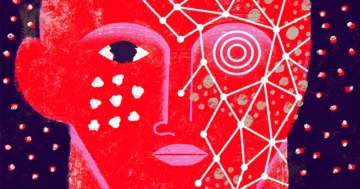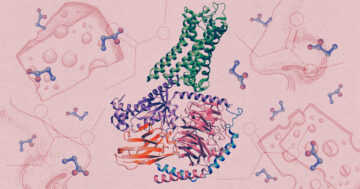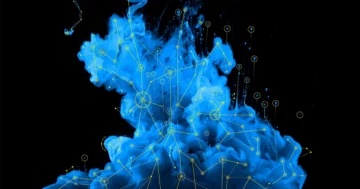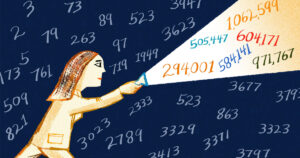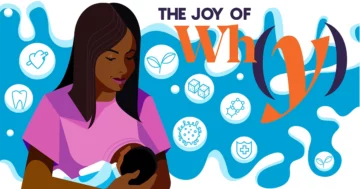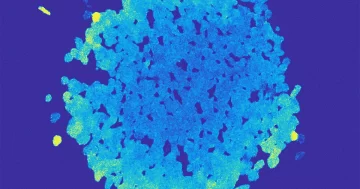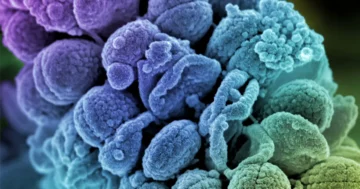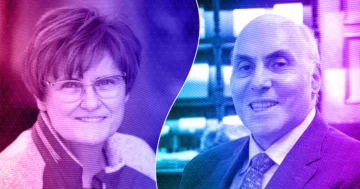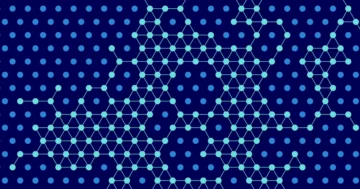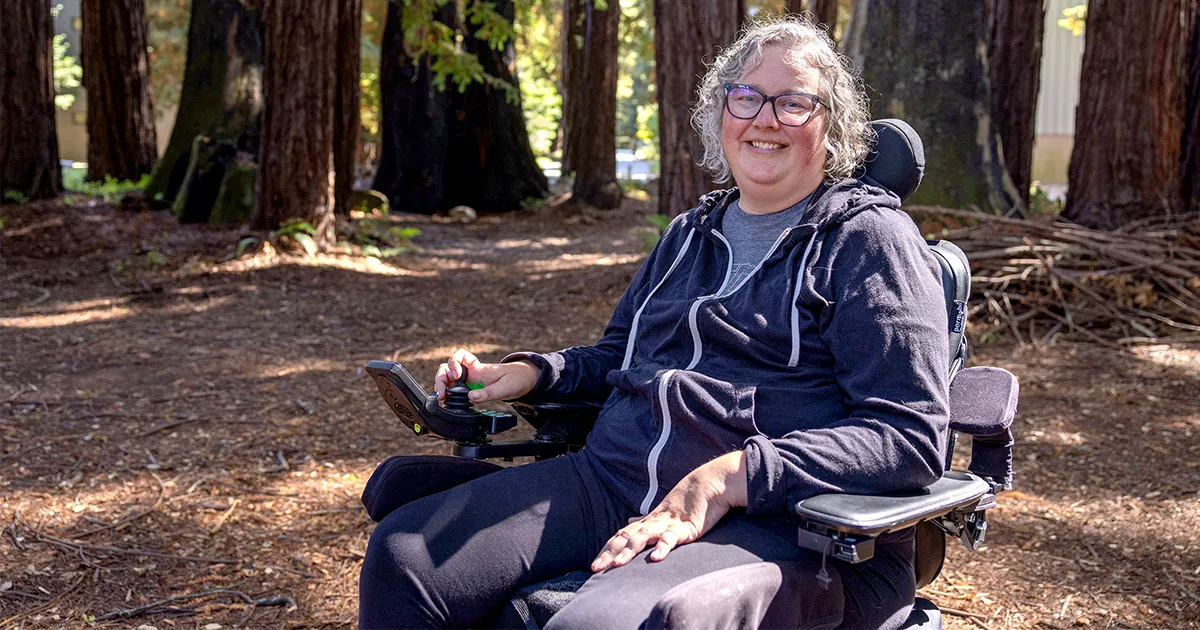
Introduction
This morning, when the sun came up, billions of humans opened their eyes and admitted into their bodies a shaft of light from space. When the stream of photons struck the retina, neurons fired. And in every organ, in nearly every cell, elaborate machinery stirred. Each cell’s circadian clock, a complex of proteins whose levels rise and fall with the sun, clicked into gear.
That clock synchronizes our bodies to the light-dark cycle of the planet by controlling the expression of more than 40% of our genome. Genes for immune signals, brain messengers and liver enzymes, to name just a few, are all transcribed to make proteins when the clock says it’s time.
That means you are not, biochemically, the same person at 10 p.m. that you are at 10 a.m. It means that evenings are a more dangerous time to take large doses of the painkiller acetaminophen: Liver enzymes that protect against overdose become scarce then. It means that vaccines given in the morning and evening work differently, and that night-shift workers, who chronically disobey their clocks, have higher rates of heart disease and diabetes. People whose clocks run fast or slow are trapped in a hideous state of perpetual jet lag.
“We are linked to this day in ways that I think people just push off,” the biochemist Carrie Partch tells me. If we understand the clock better, she has argued, we might be able to reset it. With that information, we might shape the treatment of diseases, from diabetes to cancer.
Introduction
For more than a quarter century, Partch has lived among the orchestrators of the circadian clock, the proteins whose rise and fall control its workings. As a postdoc, she produced the first visualization of the bound pair of proteins at its heart, CLOCK and BMAL1. Since then, she has continued to make visible the whorls and twists of those and other clock proteins while charting how changes to their structure add or subtract time from the day. Her achievements in pursuit of that knowledge have brought her some of the highest honors in this field of science: the Margaret Oakley Dayhoff Award from the Biophysical Society in 2018, and the National Academy of Sciences Award in Molecular Biology in 2022.
As Partch speaks, her sense of the relentlessness of time — the fact that it changes us, whether we want it to or not — shades her voice with quiet urgency. Her own journey has taken an unexpected turn; at the height of her career, she’s having to step back from the lab bench. In 2020, at the age of 47, she was diagnosed with amyotrophic lateral sclerosis, also known as Lou Gehrig’s disease. On average, people live three to five years after being diagnosed with ALS.
But that has not stopped her from thinking about the clock proteins.
She considers them, her head tilted, the light glinting off her glasses, as we sit in her living room in the hills near Santa Cruz, California. It is noon, about six hours since the sun’s photons propelled CLOCK and BMAL1 into action in her cells and the cells of every human on the West Coast.
In her mind’s eye, she can see the proteins, each a ribbon of amino acids folded around itself. BMAL1 has a kind of waist that CLOCK clasps like a dancer. Each dawn, the pair take up perches on the densely coiled mass of the genome and summon the enzymes that transcribe DNA. Over the course of the day, they cause other proteins to whirl out of the cell’s machinery, including several that eventually eclipse their power. Three proteins find handholds on CLOCK and BMAL1 around 10 p.m., silencing them and stripping them from the genome. The tide of DNA transcription shifts. Finally, in the depths of night, a fourth protein grips a tag on the end of BMAL1 and prevents any further activation.
Seconds turn into minutes, minutes into hours. Time passes. Gradually, the repressive quartet of proteins decays. In the small hours of the morning, CLOCK and BMAL1 are once again being made to renew the cycle.
Every day of your life, this system links the body’s fundamental biology to the movement of the planet. Every day of your life, as long as it lasts. No one understands this more deeply than Partch.
Chemistry and Clocks
The summer before fifth grade, when Partch was 10 years old, her father, who was a carpenter, broke his wrist playing soccer. While he waited for it to heal, he took chemistry at the local community college. He showed her how to balance a chemical equation in their yard outside Seattle, on a chalkboard propped against a tree. That was her introduction to chemistry.
“I still remember thinking how the mathematical precision of chemistry was so cool — very different from the biology we were being taught in school at that age,” she said.
When she recalls her college years at the University of Washington, she admits with a wry chuckle that some of what jumps out are the memories of attending concerts — driving down to Olympia for Sleater-Kinney shows, seeing Mudhoney and Nirvana — and her enjoyment of books by authors like Ursula Le Guin. But she was also entranced by a class on the chemistry of living systems. After graduation, she went to work as a technician at Oregon Health and Science University in Portland. Every day, she fell more in love with research. In 2000, she and her boyfriend, James, a musician and graphic designer, moved to the University of North Carolina, Chapel Hill so she could begin her doctorate.
Soon after she arrived, she met the person who would introduce her to the clock. She took a class with the molecular biologist Aziz Sancar, known for his work on DNA repair. “I was struck by the beautiful precision with which he taught us basic scientific concepts,” she said. “I was like, ‘Dude, this guy is so smart.’” Sancar, who would win a Nobel Prize in 2015, was studying a class of proteins called cryptochromes, which includes the clock proteins CRY1 and CRY2. Every organism from cyanobacteria to redwood trees has a clock, but the proteins driving each system are different. In mammals, the most important proteins aside from CLOCK and BMAL1 are forms of PER and CRY.
Introduction
As a graduate student in Sancar’s lab, Partch discovered that CRY1 had a mysterious, unstructured tail. No one knew what that section of the protein did, but then again, no one really knew how any of the coils and ribbons of the clock proteins led to their remarkable effects. And to Partch’s surprise, no one seemed to care very much either. Joseph Takahashi and his colleagues at Northwestern University had pinpointed the genes for CLOCK and BMAL1 to great acclaim just a few years before; the unspoken assumption among many scientists was that the heavy lifting was done.
It didn’t even stay unspoken. At a conference in 2002, Partch shared with a couple of colleagues that she wanted to understand the structure of the proteins. “Why?” was their response: We already know everything. Partch, politely but emphatically, disagreed.
When she graduated, she went to work at the University of Texas Southwestern Medical Center as a postdoc in the lab of Kevin Gardner, a biochemist and structural biologist now at the Advanced Science Research Center at the City University of New York Graduate Center. There she hoped she could see the clock proteins more clearly by learning to use two tricky but powerful techniques.
A Poet of Shadows
“Circle protein touches square protein equals magic”: That’s how Gardner summarizes the vagueness about molecular structure that, in his experience, many biologists are content to accept, since no one can focus on every aspect of every system. But in Partch he recognized a kindred spirit, someone driven to take apart proteins and understand them, and gifted with an almost encyclopedic memory for the literature on the circadian clock.
Working with him, Partch learned protein crystallography: how to mix solutions from which a purified protein would crystallize; how to shine X-rays through that crystalline lattice; how to deduce the protein’s shape from the subtle shadings in the diffraction pattern. A crystallographer is like a poet of shadows — Rosalind Franklin, whose images enabled Watson and Crick to infer the structure of DNA, was a crystallographer. For Partch, crystallography’s misty gray images promised a peek at the structures she planned to follow all her life.
Introduction
Yet crystallography has limits. It can only reveal the shapes of proteins stable enough to crystallize, and it provides only a snapshot of those frozen structures. Partch knew that the static shapes representing proteins in textbook diagrams obscured the truth. A protein might jackknife its legs, twist like a ratchet, or uncurl and fold itself into a strange new shape. Some proteins are also highly disordered, with long, floppy spaghetti strands of amino acids connecting their more ordered regions.
That’s why nuclear magnetic resonance spectroscopy, or NMR, also figured in Partch’s plan. In NMR, highly purified solutions of protein are placed within a magnet and hit with radio waves. The resulting magnetic perturbations of their atomic nuclei, compiled and displayed by software, can reveal the arrangement of a protein’s atoms to a discerning eye. If the measurement conditions are tuned right, you can infer how a protein moves as it binds a partner, how it experiences a change in temperature or how it shifts from one state to another. When Partch looks at a rainbow splatter of NMR data on an XY plot, she sees the swift movements of metal-binding groups and the slow folding of a protein.
When her department at UT Southwestern Medical Center recruited Takahashi, the geneticist who had identified the genes for CLOCK and BMAL1, “you better believe I insinuated myself,” she said gleefully. By the time she left the university, she, Takahashi and their colleagues had produced an image of the CLOCK-BMAL1 complex through crystallography.
In 2011, when Partch moved with James and their young son to start her lab at the University of California, Santa Cruz, she was starting from scratch. She had no projects from her postdoc to continue. She had only the singularity of her vision to understand the clock and, finally, the tools to realize it.
The Protein Clockwork
Outside the window of Partch’s UCSC office, shafts of light filter though redwood fronds. The physical science building is nestled in a forest, where slime molds bloom and trees tilt their leaves in obedience to their own circadian clocks. Inside the students and hikers crisscrossing the forest’s mossy floor, CLOCK, BMAL1 and their companion molecules are busy producing the body’s afternoon cocktail of proteins. It was here that Partch got the chance to look more deeply at the biomechanics of time.
From the beginning, she was heading into uncharted territory. “Carrie is extremely unique,” said Brian Zoltowski of Southern Methodist University, who was a postdoc in Gardner’s lab with her. He can count on one hand the labs that focus on the nitty-gritty structural biology of the mammalian clock. The skills required are esoteric, and the risk of spending years of effort for little progress is great.
Introduction
Nevertheless, Partch waded into the unknown and began to send back dispatches. With her student Chelsea Gustafson and Haiyan Xu of the University of Memphis, she found that CRY1 silences BMAL1 by binding competitively to its wriggling, disordered tail; if the tail is mutated, the clock veers off tempo or even disintegrates completely. With her student Alicia Michael, she found that CLOCK nestles against CRY1 by threading a loop into a pocket on it; if a mutation destroys the pocket, the two won’t bind. A mutation in PER2 makes it fit less well against its binding partners and renders it vulnerable to degradation; that defect advances the clock by an hour and a half. The orientation of a single bond in the tail of BMAL1 can shorten the day. The pieces of the clockwork were starting to emerge from darkness.
She made a name for herself as a collector of all the changes that can speed up the clock, slow it down, or silence it completely. “Carrie is trying to drill down to the level of understanding what the individual protein motions are,” Zoltowski said. The longer Partch spent with the morphing clock proteins, the better she could see them in her mind and understand how they might respond to a drug or a mutation.
Her findings gave chronobiology a new view of how clock proteins work. “What Carrie has discovered over and over again is that a lot of the important biology comes from the parts of the proteins that are unstructured, highly flexible and dynamic,” said Andy LiWang of the University of California, Merced, a structural biologist who studies the clock in cyanobacteria. “What she’s doing with NMR is heroic.”
By 2018, Partch had won awards and assembled a formidable portfolio of grants. She sat on the boards of learned societies. She’d had a second son and recruited a group of students and postdocs inspired by her vision. Priya Crosby, a recent postdoc in her lab, remembers meeting Partch at a party and feeling awed. Partch’s passion for understanding the clock was palpable, and she seemed to have every piece of data about it at her fingertips.
It was around then that her hands started to seize up.
A Wrench in the Works
At first it was little things. “My hands would freeze up for a sec,” she said. “You know that’s not right.” Doctors suggested that it was stress. It wasn’t until June 2020, when she returned to her lab after months in Covid-19 pandemic lockdown and found that the stairs exhausted her, that she pushed for a better answer. Nearly six months later, she had a diagnosis: ALS, or amyotrophic lateral sclerosis.
ALS kills motor neurons and destroys the ability to control movements. Fine motor skills go first, followed by the ability to walk and talk. Eventually, neurons controlling the breath go. After a diagnosis, people tend to live only a handful of years.
Partch loved to work at the lab bench. Among her students, she was known for carrying out preliminary experiments by herself to see if an idea had potential. She was a familiar sight in the lab, bustling around with ice buckets studded with tubes of protein.
Introduction
“My last protein prep was January, about two years ago,” she recalled. “That paper in Nature — we had the initial structure. We were trying to make mutations to see if it held water. … I got through half of the mutants, and I was like, ‘Oh my God.’” The ice bucket felt like lead in her arms.
Partch now uses a motorized wheelchair. Buttons were installed in the lab building for her to open doors, and James drives her to work. She still works full time — meeting with students, firing off emails, dreaming up new experiments. Speaking has become more difficult, but her mind is unaffected. At times the unknowns seem to rise up and grief threatens to overwhelm her, but she lets those moments pass. “I’m trying to live,” she said.
There is still today. And today and today and today, for as long as the cycle can repeat itself.
Universal Truths of Time
It’s a foggy morning in May, about four hours into CLOCK and BMAL1’s dance. In Partch’s office, she and Diksha Sharma, a graduate student in the lab, are discussing their passion for the folded protein segments called PAS domains. “We’re like two peas in a pod,” Partch says. Sharma is testing whether the PAS domains in CLOCK and BMAL1 can be targeted by a library of drugs for control over the clock. “It is doable, we think,” Partch says.
In the lab space, a cluster of students and postdocs are at work. Rafael Robles waves and smiles from a bench where he’s readying tubes for a protein preparation. There are fewer undergraduates than there used to be, perhaps because Partch is no longer teaching. Her graduate student Megan Torgrimson, who took Partch’s class in college, recalls her magnetism as a lecturer. But while Partch enjoyed having younger mentees around, she reasons that more space for everyone to work in isn’t a bad thing. “Every single project in the lab right now, I am so stoked about,” she says.
Introduction
In the last three years, many long-standing projects have come to fruition. On a screen in the lab, the postdoc Jon Philpott pulls up a figure from the group’s new paper in Molecular Cell, concerning a mutation in PER2 associated with familial sleep phase disorder, a condition that shortens the daily cycle by a whopping four hours. He points out in the figure how PER2 is a mass of mostly disordered regions. “These are regions that are extremely important,” he says. Until Partch showed otherwise, “most people used to think disorder was the nonfunctional bits.”
At a lab meeting, the younger scientists lead the discussion of new data. Partch sits in her wheelchair listening, occasionally chiming in. “The lab has been terrific at dealing with the uncertainty” of the diagnosis, she tells me. Now that she can no longer do experiments herself, she focuses much of her energy on steering them in the right direction.
Partch is thinking more and more these days about what is universal in life’s measurement of time. Some years ago, LiWang invited her to work with him on the clock in cyanobacteria, which has no parts in common with the human clock. It consists of just three proteins called KaiA, KaiB and KaiC, whose activity rises and falls in a 24-hour rhythm, and their two binding partners, which drive the translation of genes. In 2017 the team led by LiWang and Partch released detailed structures of each of the complexes, revealing the folds and twists that allow them to attach to each other. Later, the group showed that they could put the clock proteins into a test tube and get them to cycle for days, even months.
They were deeply into recording how that cycle was driven when Partch recognized something she’d seen while studying the human clock: competition. The little tag where CRY1 binds to BMAL1 is also where one of BMAL1’s strongest activators binds. If CRY1 outcompetes that activator, taking its place on the tag, the clock can only go forward. It is locked into this process, waiting out the minutes and the hours until the CRY1 protein’s bond decays and the clock’s cycle begins again.
In the cyanobacterial clock, Partch realized, competition among the components works the same way. It crops up, too, in the clocks of organisms like worms and fungi. “This seems to be a conserved principle in very, very different clocks,” she said. She wonders if it reflects a fundamental biophysical truth about how nature makes machines that march forward in time, following a path from which they cannot swerve.
Introduction
The Timing for Life on Mars
One dawn more. The light of the sun beams through the cold reaches of space, down to Earth, into the china-blue eyes of Carrie Partch. CLOCK and BMAL1 begin their dance. She goes to work. She hangs out with her boys, who are 13 and 18. The younger one, who likes going down YouTube rabbit holes about chemistry, insists that they watch a marvelously goofy hourlong video together about isolating vanillin from rubber gloves and modifying it into hot sauce. She thinks about the ribbons and coils of clock proteins. Some people faced with her diagnosis might decide it’s time to do something different, but Partch has never considered turning away from the clock. She wants to know the end of too many stories.
When she imagines a future where we really understand circadian biology, she pictures knowing what someone’s clock is doing at any moment of the day. In response to a call for proposals by the Defense Advanced Research Projects Agency (DARPA), she and colleagues once dreamed up the idea for a nasal probe that could assess the state of your clock, transmit data about it, and perhaps even change it. DARPA famously favors far-out proposals, but Partch jokes that they out-DARPAed DARPA, since they didn’t get the money. She still thinks about the potential of that device.
Of all the whirling planets of the solar system, it’s this one, with its 24-hour day, that has shaped us. For that reason, there are significant questions about how humans will stay healthy if we ever try to live on other planets. Like a merry-go-round whose rotation seems gentle until you try to get off, the terrestrial cycles ingrained in our cells may pull on us perilously. “They really tie us to Earth,” Partch said.
But she imagines being able to adjust the dynamics of CLOCK, BMAL1 or one of their many partners so that space travelers do not wind up ill from damaged clocks. Nature offers some inspiration: A mutation in CRY1 discovered in the laboratory of Michael Young at Rockefeller University extends humans’ circadian cycle by about 40 minutes, condemning its bearers to a perpetually mismatched sleep cycle on Earth. Partch notes that it would provide the perfect timing for living on Mars.
Partch finds that her voice is failing her more these days. She is pleased with an AI-generated clone of her voice that she’s obtained, but she has still cut back on speaking appearances and travel. Her absence from circadian clock meetings is conspicuous to colleagues, admirers and friends. Modern chronobiology is built on scientific contributions from Nobel Prize winners and other famous pioneers, but also by the structural details that she brought to light. “There’s a much richer world there,” Gardner said. “And Carrie Partch is the one who gave that to us.”
In Partch’s living room, as the fog rolls out to welcome the evening, she and I talk about the writer Ursula Le Guin, whose fiction was often preoccupied with time. In her novel The Dispossessed, Le Guin wrote about getting time on your side — about arranging your life so that its passage bears you in a direction of your choosing. “The thing about working with time, instead of against it,” she wrote, “is that it is not wasted. Even pain counts.”
“Are you getting time on your side?” I ask.
“Yes,” Partch says. “Yes, I think so.”
- SEO Powered Content & PR Distribution. Get Amplified Today.
- PlatoData.Network Vertical Generative Ai. Empower Yourself. Access Here.
- PlatoAiStream. Web3 Intelligence. Knowledge Amplified. Access Here.
- PlatoESG. Carbon, CleanTech, Energy, Environment, Solar, Waste Management. Access Here.
- PlatoHealth. Biotech and Clinical Trials Intelligence. Access Here.
- Source: https://www.quantamagazine.org/in-our-cellular-clocks-shes-found-a-lifetime-of-discoveries-20231010/
- :has
- :is
- :not
- :where
- ][p
- $UP
- 10
- 13
- 2000
- 2011
- 2015
- 2017
- 2018
- 2020
- 2022
- 2023
- 40
- a
- ability
- Able
- About
- about IT
- Academy
- Accept
- achievements
- Action
- Activation
- activity
- add
- adjust
- admitted
- advanced
- advances
- After
- again
- against
- age
- agency
- ago
- All
- allow
- almost
- already
- als
- also
- am
- among
- an
- and
- Another
- answer
- any
- apart
- appearances
- ARE
- argued
- arms
- around
- arrangement
- arrived
- AS
- aside
- ask
- aspect
- assembled
- assess
- associated
- assumption
- At
- attach
- attending
- authors
- average
- awards
- away
- back
- Bad
- Balance
- basic
- BE
- Bears
- beautiful
- because
- become
- been
- before
- began
- begin
- Beginning
- being
- believe
- Better
- billions
- bind
- binding
- biology
- Biophysics
- Bloom
- bodies
- bond
- Books
- bound
- Brain
- Breath
- Broke
- brought
- Building
- built
- bustling
- busy
- but
- by
- california
- call
- called
- came
- CAN
- Cancer
- cannot
- care
- Career
- Carolina
- carrying
- Cause
- cell
- Cells
- cellular
- Center
- Century
- Chance
- change
- Changes
- charting
- chemical
- chemistry
- choosing
- Circadian clock
- City
- class
- clearly
- Clock
- Clocks
- clockwork
- Cluster
- Coast
- cocktail
- cold
- colleagues
- collector
- College
- come
- comes
- Common
- community
- community college
- companion
- competition
- completely
- complex
- components
- concepts
- concerning
- concerts
- condition
- conditions
- Conference
- Connecting
- considered
- considers
- consists
- content
- continue
- continued
- contributions
- control
- controlling
- Cool
- could
- Couple
- course
- COVID-19
- COVID-19 pandemic
- crops
- Cut
- cycle
- cycles
- daily
- dance
- Dangerous
- darpa
- data
- day
- Days
- dealing
- decide
- Defense
- Defense Advanced Research Projects Agency
- Department
- Depths
- Designer
- detailed
- details
- device
- Diabetes
- diagnosis
- diagrams
- DID
- different
- difficult
- direction
- discovered
- discussing
- discussion
- Disease
- diseases
- disorder
- displayed
- dna
- do
- Doctors
- doing
- domains
- done
- doors
- down
- drive
- driven
- drives
- driving
- drug
- Drugs
- dynamic
- dynamics
- each
- earth
- effects
- effort
- either
- Elaborate
- emails
- emerge
- enabled
- encyclopedic
- end
- energy
- enjoyed
- enough
- Equals
- Even
- evening
- eventually
- EVER
- Every
- every day
- everyone
- everything
- experience
- Experiences
- experiments
- expression
- extends
- extremely
- eye
- Eyes
- faced
- fact
- failing
- Fall
- Falls
- familiar
- famous
- famously
- FAST
- favors
- felt
- few
- fewer
- Fiction
- field
- fifth
- Figure
- figured
- filter
- Finally
- Find
- findings
- finds
- fine
- fingertips
- fired
- firing
- First
- fit
- five
- flexible
- Floor
- Focus
- focuses
- Fog
- folds
- follow
- followed
- following
- For
- forest
- formidable
- forms
- Forward
- found
- four
- Fourth
- franklin
- Freeze
- friends
- from
- frozen
- fruition
- full
- fundamental
- further
- future
- gardner
- gave
- Gear
- genome
- gentle
- get
- getting
- given
- glasses
- Go
- God
- Goes
- going
- got
- grade
- gradually
- graduate
- grants
- graphic
- gray
- great
- Group
- Group’s
- Guy
- had
- Half
- hand
- handful
- Hands
- hangs
- Have
- having
- he
- head
- Heading
- Health
- healthy
- Heart
- Heart disease
- heavy
- heavy lifting
- height
- Held
- her
- here
- higher
- highest
- highly
- Hills
- him
- his
- Hit
- Holes
- Honors
- HOT
- hour
- HOURS
- How
- How To
- HTML
- http
- HTTPS
- human
- Humans
- i
- ICE
- idea
- identified
- if
- image
- images
- imagines
- immune
- important
- in
- includes
- Including
- individual
- information
- initial
- inside
- Inspiration
- inspired
- installed
- instead
- into
- introduce
- Introduction
- invited
- IT
- ITS
- itself
- james
- January
- journey
- jumps
- june
- just
- Kills
- Kind
- Know
- Knowing
- knowledge
- known
- lab
- laboratory
- Labs
- large
- Last
- later
- lead
- learned
- learning
- lecturer
- Led
- left
- legs
- less
- Lets
- Level
- levels
- Library
- Life
- lifetime
- lifting
- light
- like
- likes
- limits
- linked
- links
- Listening
- literature
- little
- live
- Liver
- living
- local
- lockdown
- locked
- Long
- long-standing
- longer
- Look
- LOOKS
- Lot
- lou
- love
- loved
- machinery
- Machines
- made
- magazine
- Magnetism
- make
- MAKES
- many
- March
- mars
- Mass
- mathematical
- May..
- me
- means
- measurement
- medical
- meeting
- meetings
- Memories
- Memory
- met
- methodist
- might
- mind
- minutes
- mix
- Modern
- molds
- molecular
- moment
- Moments
- money
- months
- more
- morning
- most
- mostly
- motions
- Motor
- moved
- movement
- movements
- moves
- much
- Musician
- Mutation
- my
- myself
- mysterious
- name
- nasal
- Nature
- Near
- nearly
- Neurons
- never
- New
- New York
- night
- NIH
- no
- nobel
- nobel prize
- North
- north carolina
- Northwestern University
- Notes
- novel
- now
- nuclear
- obscured
- obtained
- occasionally
- of
- off
- Offers
- Office
- often
- Old
- on
- once
- ONE
- only
- open
- opened
- or
- Oregon
- Other
- otherwise
- our
- out
- outside
- over
- overdose
- own
- Pain
- pair
- palpable
- pandemic
- partner
- partners
- parts
- party
- pass
- passage
- passes
- passion
- path
- Pattern
- People
- per
- perfect
- perhaps
- Perpetual
- person
- phase
- Photons
- physical
- Pictures
- piece
- pieces
- pioneers
- Place
- placed
- plan
- planet
- Planets
- planned
- plato
- Plato Data Intelligence
- PlatoData
- playing
- pleased
- poet
- points
- portfolio
- Portland
- postdocs
- potential
- power
- powerful
- Precision
- preliminary
- preparation
- prevents
- principle
- prize
- probe
- process
- Produced
- producing
- Progress
- project
- projects
- promised
- propelled
- Proposals
- protect
- Protein
- Proteins
- provide
- provides
- Pulls
- pursuit
- Push
- pushed
- put
- Quarter
- Questions
- Rabbit
- Radio
- Rates
- Reaches
- Readying
- realize
- realized
- really
- reason
- reasons
- recent
- recognized
- recording
- reflects
- regions
- remarkable
- remember
- renders
- repair
- repeat
- representing
- required
- research
- resonance
- Respond
- response
- resulting
- Retina
- reveal
- revealing
- Ribbon
- right
- Rise
- Rises
- Risk
- rolls
- Room
- rubber
- Run
- Said
- same
- Santa
- says
- Scarce
- School
- Science
- SCIENCES
- scientific
- scientists
- scratch
- Screen
- Seattle
- SEC
- Second
- Section
- see
- seeing
- seem
- seemed
- seems
- seen
- sees
- segments
- Seize
- send
- sense
- several
- Shape
- shaped
- shapes
- shared
- Sharma
- she
- Shifts
- shine
- showed
- Shows
- side
- Sight
- signals
- significant
- Silence
- since
- single
- singularity
- sit
- sits
- SIX
- Six months
- skills
- sleep
- slow
- small
- smart
- Snapshot
- So
- Soccer
- Society
- Software
- solar
- Solar system
- Solutions
- some
- Someone
- something
- son
- Southern
- Space
- speaking
- Speaks
- Spectroscopy
- speed
- Spending
- spent
- spirit
- square
- stable
- start
- started
- Starting
- State
- stay
- steering
- Step
- Still
- stopped
- Stories
- Strands
- strange
- stream
- stress
- stripping
- structural
- structure
- structures
- Student
- Students
- studies
- Studying
- summer
- Sun
- surprise
- Swerve
- SWIFT
- system
- Systems
- TAG
- Take
- taken
- taking
- Talk
- targeted
- taught
- Teaching
- team
- techniques
- tells
- Tempo
- terrestrial
- territory
- test
- Testing
- texas
- textbook
- than
- that
- The
- The State
- The West
- their
- Them
- then
- There.
- These
- they
- thing
- things
- Think
- Thinking
- Thinks
- this
- those
- though?
- threatens
- three
- Through
- Tide
- TIE
- time
- times
- timing
- to
- today
- together
- too
- took
- tools
- touches
- Translation
- transmit
- travel
- travelers
- treatment
- tree
- Trees
- truth
- try
- trying
- TURN
- Turning
- twist
- twists
- two
- unaffected
- uncharted
- understand
- understanding
- understands
- Unexpected
- unique
- Universal
- university
- University of California
- university of washington
- unknown
- until
- urgency
- us
- use
- used
- uses
- vaccines
- very
- Video
- View
- visible
- vision
- Voice
- Waiting
- walk
- want
- wanted
- wants
- was
- washington
- Watch
- Water
- Watson
- waves
- Way..
- ways
- we
- webp
- welcome
- WELL
- went
- were
- West
- What
- What is
- when
- whether
- which
- while
- WHO
- whose
- why
- will
- wind
- window
- winners
- with
- within
- Won
- Work
- workers
- working
- workings
- works
- world
- worms
- would
- Wrench
- writer
- wrote
- years
- york
- you
- young
- Younger
- Your
- youtube
- zephyrnet

